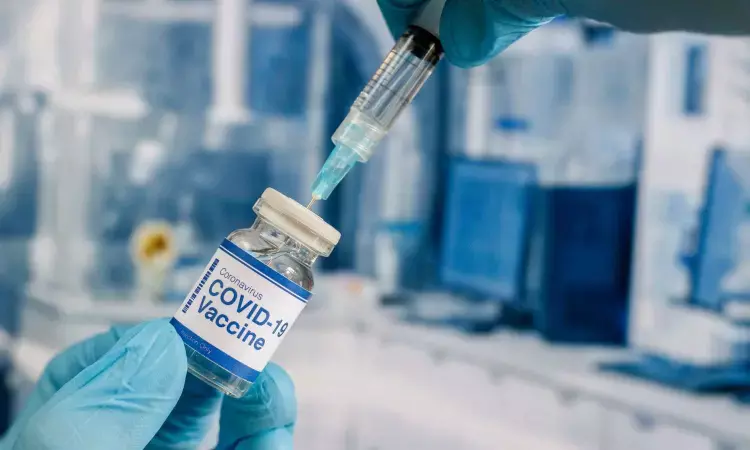- Home
- Medical news & Guidelines
- Anesthesiology
- Cardiology and CTVS
- Critical Care
- Dentistry
- Dermatology
- Diabetes and Endocrinology
- ENT
- Gastroenterology
- Medicine
- Nephrology
- Neurology
- Obstretics-Gynaecology
- Oncology
- Ophthalmology
- Orthopaedics
- Pediatrics-Neonatology
- Psychiatry
- Pulmonology
- Radiology
- Surgery
- Urology
- Laboratory Medicine
- Diet
- Nursing
- Paramedical
- Physiotherapy
- Health news
- Fact Check
- Bone Health Fact Check
- Brain Health Fact Check
- Cancer Related Fact Check
- Child Care Fact Check
- Dental and oral health fact check
- Diabetes and metabolic health fact check
- Diet and Nutrition Fact Check
- Eye and ENT Care Fact Check
- Fitness fact check
- Gut health fact check
- Heart health fact check
- Kidney health fact check
- Medical education fact check
- Men's health fact check
- Respiratory fact check
- Skin and hair care fact check
- Vaccine and Immunization fact check
- Women's health fact check
- AYUSH
- State News
- Andaman and Nicobar Islands
- Andhra Pradesh
- Arunachal Pradesh
- Assam
- Bihar
- Chandigarh
- Chattisgarh
- Dadra and Nagar Haveli
- Daman and Diu
- Delhi
- Goa
- Gujarat
- Haryana
- Himachal Pradesh
- Jammu & Kashmir
- Jharkhand
- Karnataka
- Kerala
- Ladakh
- Lakshadweep
- Madhya Pradesh
- Maharashtra
- Manipur
- Meghalaya
- Mizoram
- Nagaland
- Odisha
- Puducherry
- Punjab
- Rajasthan
- Sikkim
- Tamil Nadu
- Telangana
- Tripura
- Uttar Pradesh
- Uttrakhand
- West Bengal
- Medical Education
- Industry
COVID-19 vaccines, prior infection reduce transmission of Omicron

Study in California Prisons Found Recent Vaccination and Boosters Reduce Infectiousness, but Infection Risk Remains High.
Vaccination and boosting, especially when recent, helped to limit the spread of COVID-19 in California prisons during the first Omicron wave, according to an analysis by researchers at UC San Francisco that examined transmission between people living in the same cell.
The study demonstrates the benefits of vaccination and boosting, even in settings where many people are still getting infected, in reducing transmission. And it shows the cumulative effects from boosting and the additional protection that vaccination gives to those who were previously infected. The likelihood of transmission fell by 11 percent for each additional dose.
“A lot of the benefits of vaccines to reduce infectiousness were from people who had received boosters and people who had been recently vaccinated,” said Nathan Lo, MD, PhD, a faculty research fellow in the Division of HIV, Infectious Diseases and Global Medicine at UCSF and the senior author of the study, published Jan. 2, 2022, in Nature Medicine. “Our findings are particularly relevant to improving health for the incarcerated population.”
The researchers analyzed deidentified data collected by the California Department of Corrections and Rehabilitation (CDCR). This included COVID-19 test results, vaccine status and housing locations for 111,687 residents, 97% of whom were male, between Dec. 15, 2021, and May 20, 2022.
Breakthrough infections were common, despite the residents’ relatively high vaccination rate of 81% with the primary vaccine series. But the rate of serious illness was low. In just over five months, there were 22,334 confirmed SARS-CoV-2 Omicron infections, 31 hospitalizations and no COVID-19 deaths.
Vaccinated residents with breakthrough infections were significantly less likely to transmit them: 28% versus 36% for those who were unvaccinated. But the likelihood of transmission grew by 6% for every five weeks that passed since someone’s last vaccine shot.
Natural immunity from a prior infection also had a protective effect, and the risk of transmitting the virus was 23% for someone with a reinfection compared to 33% for someone who had never been infected.
Those with hybrid immunity, from both infection and vaccination, were 40% less likely to transmit the virus. Half of that protection came from the immunity that one acquires from fighting an infection and the other half came from being vaccinated.
The researchers said they were gratified to see that vaccination confers addition protection even for those who had already been infected, but they were surprised by how much the infection continued to spread, despite the residents’ relatively high vaccination rates.
“Regardless of the benefits you see in vaccination and prior infection, there is still a high amount of transmission in this study,” said Sophia Tan, a researcher in Lo’s lab and the study’s first author. “We hope these findings can support ongoing efforts to protect this vulnerable population.”
This includes making efforts to keep residents current with boosters and increasing the vaccination rate of the prison staff, only 73 percent of whom had received the primary series at the time of the study.
The general rate of boosting could also be improved significantly. At the time of the study, just 59% of residents and 41% of staff had received all the doses recommended by the U.S. Centers for Disease Control and Prevention (CDC), based on their age and health status.
“Within the two months following vaccination, people are the least infectious, which indicates that boosters and large timed vaccination campaigns may have a role to reduce transmission in surges,” Lo said. “New ideas are needed since the risk of infection in this vulnerable population remains so great.”
Reference:
Tan, S.T., Kwan, A.T., Rodríguez-Barraquer, I. et al. Infectiousness of SARS-CoV-2 breakthrough infections and reinfections during the Omicron wave. Nat Med (2023). https://doi.org/10.1038/s41591-022-02138-x
Dr Kamal Kant Kohli-MBBS, DTCD- a chest specialist with more than 30 years of practice and a flair for writing clinical articles, Dr Kamal Kant Kohli joined Medical Dialogues as a Chief Editor of Medical News. Besides writing articles, as an editor, he proofreads and verifies all the medical content published on Medical Dialogues including those coming from journals, studies,medical conferences,guidelines etc. Email: drkohli@medicaldialogues.in. Contact no. 011-43720751


